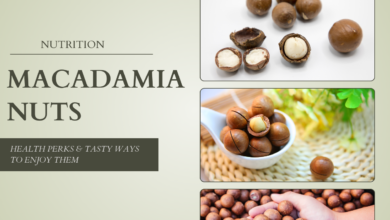Top 5 High-Fiber Foods for Diabetes You’ll Love to Eat

Introduction to Fiber and Diabetes
Living with diabetes means paying close attention to what you eat — and fiber plays a starring role here. But why exactly is fiber so important for people managing diabetes? Simply put, fiber slows down the absorption of sugar, helping to keep blood sugar levels steady instead of spiking unexpectedly.
Why Fiber is Important for People with Diabetes
Fiber isn’t just about digestion—it’s a secret weapon for blood sugar control. When you consume fiber-rich foods, they digest slowly, meaning glucose is released gradually into the bloodstream. This keeps energy steady and cravings low, which is a big win for diabetes management.
Types of Fiber: Soluble vs Insoluble
There are two main types of fiber: soluble and insoluble. Soluble fiber dissolves in water and forms a gel-like substance in your gut, helping slow sugar absorption. Insoluble fiber, meanwhile, adds bulk to your stool and keeps your digestive system moving smoothly. Both are essential, but soluble fiber is especially helpful for blood sugar control.
Benefits of High-Fiber Foods in Diabetes Management
Eating a fiber-rich diet does more than just manage blood sugar.
How Fiber Helps Control Blood Sugar Levels
Fiber reduces blood sugar spikes after meals by slowing the digestion and absorption of carbohydrates. This helps prevent those annoying sugar highs and lows that many diabetics struggle with.
Fiber’s Role in Weight Management
Fiber keeps you feeling fuller longer. For someone with diabetes, managing weight is often a crucial part of controlling the condition, and fiber-rich foods help curb overeating.
Fiber and Heart Health in Diabetics
Did you know people with diabetes are more prone to heart disease? Fiber helps by lowering cholesterol and reducing inflammation, keeping your heart healthier in the long run.
Criteria for Choosing the Best High-Fiber Foods for Diabetes
When selecting high-fiber foods for diabetes, look for those with a low glycemic index (GI), rich in soluble fiber, and minimal added sugars or unhealthy fats. Foods that also pack vitamins, minerals, and antioxidants offer extra health benefits.

The Top 5 High-Fiber Foods You’ll Love
1. Lentils – The Powerhouse Legume
Nutritional Profile of Lentils
Lentils are packed with fiber—about 15 grams per cooked cup—and protein, making them a diabetes-friendly superfood.
How Lentils Help Manage Diabetes
Their high fiber and protein content slow digestion, stabilize blood sugar, and improve insulin sensitivity.
Easy Ways to Incorporate Lentils into Your Diet
From soups and stews to salads and veggie burgers, lentils are versatile and delicious.
2. Chia Seeds – Tiny But Mighty
Fiber Content and Nutritional Benefits
Chia seeds boast an impressive 10 grams of fiber per ounce, along with omega-3 fatty acids and antioxidants.
Blood Sugar Benefits of Chia Seeds
Chia’s gel-forming soluble fiber helps regulate blood sugar spikes and keeps you feeling full.
Creative Uses of Chia Seeds in Meals
Sprinkle chia on yogurt, blend into smoothies, or make chia pudding for a tasty treat.
3. Berries – Sweet and Fiber-Rich
Best Berries for Diabetes
Blueberries, raspberries, and strawberries are packed with fiber, antioxidants, and vitamins.
Antioxidant and Fiber Power Combined
Berries fight inflammation and improve blood sugar control thanks to their fiber and polyphenols.

Delicious Berry Recipes for Diabetics
Add berries to oatmeal, salads, or make a refreshing berry salsa.
4. Oats – Breakfast That Works Wonders
Soluble Fiber in Oats and Its Effects
Oats contain beta-glucan, a powerful soluble fiber that lowers cholesterol and controls blood sugar.
Oats and Insulin Sensitivity
Regular oat consumption can improve how your body responds to insulin.
Simple Oatmeal Ideas for Every Morning
Try overnight oats, savory oat bowls, or oat smoothies for variety.
5. Broccoli – The Green Fiber Giant
Fiber and Nutrients in Broccoli
Broccoli is loaded with fiber, vitamins C and K, and antioxidants.
Broccoli’s Role in Blood Sugar Regulation
Its fiber helps slow digestion, while antioxidants combat inflammation.
Cooking Tips to Keep Broccoli Delicious
Steaming or roasting with a bit of olive oil keeps nutrients intact and flavor bright.

How to Increase Fiber Intake Safely for Diabetes
Jumping straight into high fiber can cause bloating or gas. Increase fiber gradually and drink plenty of water to help your digestive system adjust comfortably.
Common Myths About Fiber and Diabetes
Some think fiber can cure diabetes or replace medication—that’s not true. Fiber is a powerful tool but works best alongside a balanced diet and treatment plan.
Conclusion
High-fiber foods are your best friends if you have diabetes. From lentils to berries, these delicious options not only make your meals more enjoyable but also help stabilize blood sugar, manage weight, and protect your heart. Start incorporating these fiber-packed foods into your diet today—your body will thank you!
FAQs
Q1: What is the recommended daily fiber intake for diabetics?
Most adults with diabetes should aim for at least 25 to 30 grams of fiber per day.
Q2: Can high-fiber foods replace diabetes medication?
No, fiber helps manage blood sugar but should complement prescribed medication, not replace it.
Q3: Are there any side effects of eating too much fiber?
Eating too much fiber too quickly can cause bloating, gas, or constipation.
Q4: How soon can one see benefits from increasing fiber intake?
Some improvements in blood sugar control may be noticed within a few weeks.
Q5: Are canned or frozen high-fiber foods as effective as fresh ones?
Yes, canned and frozen foods can retain most of their fiber and nutrients if processed properly.




